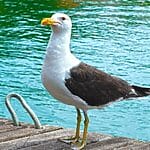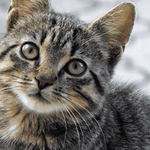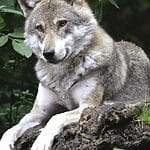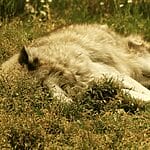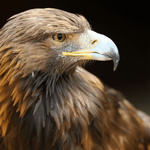Discover animals that resemble anteaters in more ways than one! From the critically endangered Chinese Pangolin to the arboreal Tamandua, these creatures share striking similarities with anteaters in terms of appearance, behavior, and diet.
Learn about their unique features, habitats, and the challenges they face in our informative post. Dive into the fascinating world of these anteater-like animals and uncover the surprising connections they share with each other.
Key Takeaways:
- The Chinese Pangolin, with its scale-covered body and long tongue, shares many physical and behavioral similarities with anteaters and is critically endangered due to poaching and illegal wildlife trade.
- Armadillos, known for their distinctive armored shells, are insectivores like anteaters, with a particular taste for ants and termites. They can be found in various species across the Americas, from Argentina to the southern United States.
- The Aardvark, native to Africa, is a solitary, nocturnal creature that shares the anteater’s long tongue, burrowing habits, and insectivorous diet. Its burrowing contributes significantly to soil aeration and nutrient recycling.
- The Echidna, found in Australia and New Guinea, is an egg-laying mammal with a spiny coat that resembles an anteater’s fur. It has a specialized diet of ants and termites, and its reproductive process involves a single, leathery egg and a puggle that develops in the mother’s pouch.
- The Tamandua, a lesser-known cousin of the giant anteater, is an arboreal creature adapted to life in the trees of South and Central America. It shares the anteater’s long tongue and insectivorous diet but is more selective in its foraging.
List of Animals That Look Like Anteaters – Physical Traits and Habitats
The Chinese Pangolin, certain armadillo species, the aardvark, the echidna, the tamandua, the numbat, the giant anteater, the silky anteater, and the pangolin share similarities with anteaters through their elongated snouts, specialized diets of ants and termites, and defensive behaviors.
| Animal | Physical Characteristics and Habitat |
| Chinese Pangolin | Covered in keratin scales; up to 3.3 feet in length and weighs between 4.4 to 15.4 pounds. Native to Nepal, Southeast Asia, and southern China, they prefer forested hills and mountains. Critically endangered due to poaching and illegal wildlife trade. |
| Armadillo | Notable for its armored shell made up of overlapping plates. Found in diverse habitats across the Americas. Known for their ability to roll into a tight ball when threatened. |
| Aardvark | Nocturnal creature native to Africa. Known for its long tongue, burrowing habits, and insectivorous diet. Its burrowing contributes significantly to soil aeration and nutrient recycling. |
| Echidna | Found in Australia and New Guinea, known for its spiny coat resembling an anteater’s fur. It’s an egg-laying mammal with a specialized diet of ants and termites. |
| Tamandua | Arboreal creature adapted to life in the trees of South and Central America. Shares the anteater’s long tongue and insectivorous diet but is more selective in its foraging. |
| Numbat | Australian marsupial with a reddish-brown coat and white stripes, known for its bushy tail. Diurnal and feeds primarily on termites. Its habitat includes eucalypt woodlands and sandplain heaths of southwestern Australia. Listed as endangered. |
| Giant Anteater | Can reach up to 7 feet in length. Inhabits tropical and dry forests, savannas, and open grasslands in South and Central America. Known for its diet of ants and termites and solitary nature. |
| Silky Anteater | Arboreal creatures adapted to life in the trees of South and Central America. Shares the anteater’s long tongue and insectivorous diet but is more selective in its foraging. |
| Pangolin | Recognized by its scale-covered body and elongated snout. Native to various regions in Africa and Asia. Specialized insectivorous diet primarily consisting of ants and termites. Critically endangered due to illegal wildlife trade. |
1. Chinese Pangolin
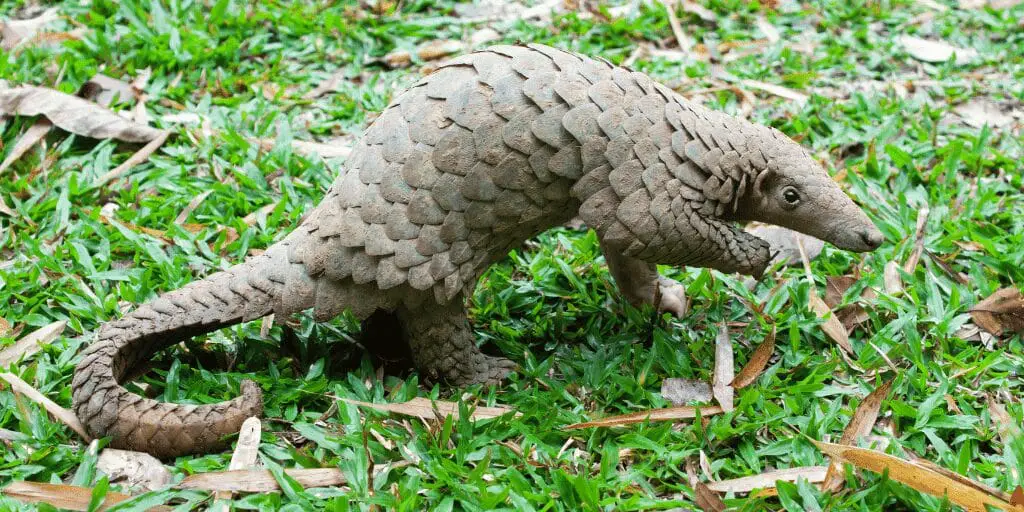
Physical Characteristics and Habitat
The Chinese Pangolin is a unique creature that often draws comparisons to the anteater due to its distinctive scale-covered body. These scales, which serve as a form of armor, are made of keratin – the same material that makes up human hair and nails.
An adult Chinese Pangolin typically has 18 rows of these overlapping scales, which cover its body except for the face, belly, and the inside of its legs. When it comes to size, these animals can vary, but they generally measure up to 3.3 feet in length and can weigh between 4.4 to 15.4 pounds.
The habitat of the Chinese Pangolin is quite diverse, stretching across a range of countries from Nepal to parts of Southeast Asia and reaching into southern China. These solitary creatures prefer forested hills and mountains, where they can burrow and find ample food. Unfortunately, the Chinese Pangolin is critically endangered, largely due to poaching and the illegal wildlife trade, which threatens its existence in these natural habitats.
Diet and Behavior
When it comes to diet, the Chinese Pangolin is an insectivore, with a particular taste for ants and termites. This diet is one of the reasons why it’s often likened to anteaters. To forage for these insects, the pangolin uses its large, powerful foreclaws to dig into ant hills or termite mounds, and then employs its long, sticky tongue to extract its prey – a method that is remarkably efficient.
The behavior of the Chinese Pangolin is characterized by its nocturnal and secretive nature. These animals are most active at night when they search for food and are rarely seen during the day. When faced with predators or threats, the Chinese Pangolin employs a defense mechanism similar to that of an anteater, curling up into a tight ball, with its scales acting as a formidable shield against attackers.
Reproduction and Lifecycle
Reproduction for the Chinese Pangolin involves the birth of a single offspring after a gestation period that can last from 70 to 140 days. One of the most fascinating aspects of their reproduction is that the young are born with soft scales, which harden after a couple of days. This adaptation is crucial for the newborn’s survival in the wild.
The maternal instincts of the Chinese Pangolin are quite strong. Mothers are known to carry their young on their backs or tails, ensuring their safety and teaching them necessary survival skills. When danger is present, a mother pangolin will protect her offspring by either rolling around them or taking them into the burrow, showcasing a level of care and protection that is quite touching and reminiscent of the protective measures seen in other species.
2. Armadillo
Armadillo’s Unique Armor
When you think of an armadillo, the first thing that probably comes to mind is its remarkable armor. This isn’t just any old skin; it’s a tough, protective shell that’s quite similar to the armor of an anteater.
The armadillo’s armor is made up of overlapping plates covering the back, head, legs, and tail, which serve as a formidable shield against predators. Just like anteaters, armadillos have evolved this feature to protect themselves in the wild.
There are various species of armadillos, with the nine-banded armadillo being the most common in the Americas. These creatures can be found from Argentina to the southern United States, adapting to different habitats such as rainforests, grasslands, and semi-deserts.
One of the most fascinating behaviors of armadillos is their ability to roll into a tight ball when threatened, a defensive tactic that is somewhat mirrored by the anteater’s use of its long, strong front claws to fend off attackers.
Feeding Habits and Ecology
Armadillos share more than just looks with anteaters; they also have similar diets. These little armored diggers love to snack on insects, making them insectivorous like their long-snouted lookalikes. They use their sharp claws to dig into the ground and uncover their meals, which include beetles, ants, and termites. This not only satisfies their hunger but also plays a crucial role in controlling pest populations.
Moreover, armadillos contribute to the environment by aerating the soil as they dig for food. This digging can enhance soil quality and promote the growth of new vegetation. However, it’s worth noting that their burrowing habits can sometimes cause issues for human agriculture or landscaping.
Social Behavior and Reproduction
Armadillos tend to be loners, roaming their territories in search of food and keeping to themselves, much like anteaters. They usually only come together for breeding purposes. The reproductive process of armadillos has a unique twist: certain species, such as the nine-banded armadillo, give birth to identical quadruplets from a single fertilized egg. This is quite different from anteaters, which typically have a single offspring at a time.
These quadruplets represent a fascinating reproductive strategy, ensuring that the genes passed on to the next generation are exactly the same, a rare phenomenon in the animal kingdom. Despite their solitary nature, this method of reproduction ensures that when armadillos do interact, they make a significant impact on the population dynamics of their species.
3. Aardvark
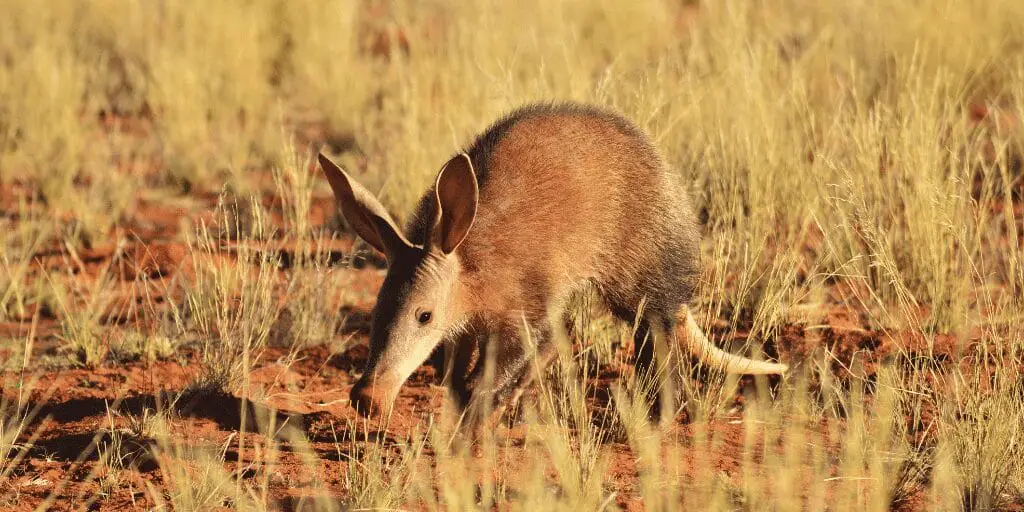
Aardvark’s Nocturnal Lifestyle
When the sun dips below the horizon and the world quiets down, the aardvark springs to life. This nocturnal creature, much like the anteater, prefers the cover of darkness to go about its activities. The aardvark’s nightly escapades are spent burrowing and foraging, creating an extensive network of tunnels that can be quite the architectural feat.
These burrows not only serve as homes but also as protection from predators and extreme weather conditions. Found mainly in the savannas, grasslands, and woodlands of Africa, the aardvark plays a crucial role in its ecosystem. Its burrowing habits contribute to soil aeration and the recycling of nutrients, much like how earthworms benefit the soil in other parts of the world.
Diet and Foraging Techniques
The aardvark’s menu is quite specialized, with ants and termites being its delicacies of choice. This diet draws a parallel to that of the anteater, although the two are not closely related. Equipped with a sticky, elongated tongue that can measure up to 12 inches, the aardvark laps up its prey with ease.
Its powerful limbs and spade-like claws are perfect for breaking into the hard exteriors of termite mounds and ant hills, allowing it to reach the insect buffet within. Unlike anteaters, aardvarks tend to consume the entire termite mound or ant hill, rather than just the insects, ingesting a significant amount of dirt in the process. This unique foraging technique not only satisfies their hunger but also impacts the insect population, keeping it in check.
Breeding Habits and Offspring Care
The aardvark’s approach to family life is somewhat solitary, much like the anteater. They come together to mate, and after a gestation period of about seven months, a single offspring is usually born. The young aardvark, called a “cub,” is nurtured in the safety of the burrow, receiving attentive care from its mother.
This period of dependency is critical as the cub develops the necessary skills for survival. The mother aardvark’s dedication to her offspring mirrors the anteater’s maternal investment, with both species going to great lengths to ensure the well-being and protection of their young. As the cub grows and becomes more independent, it will eventually venture out on its own, continuing the cycle of life for these fascinating, anteater-like creatures.
4. Echidna
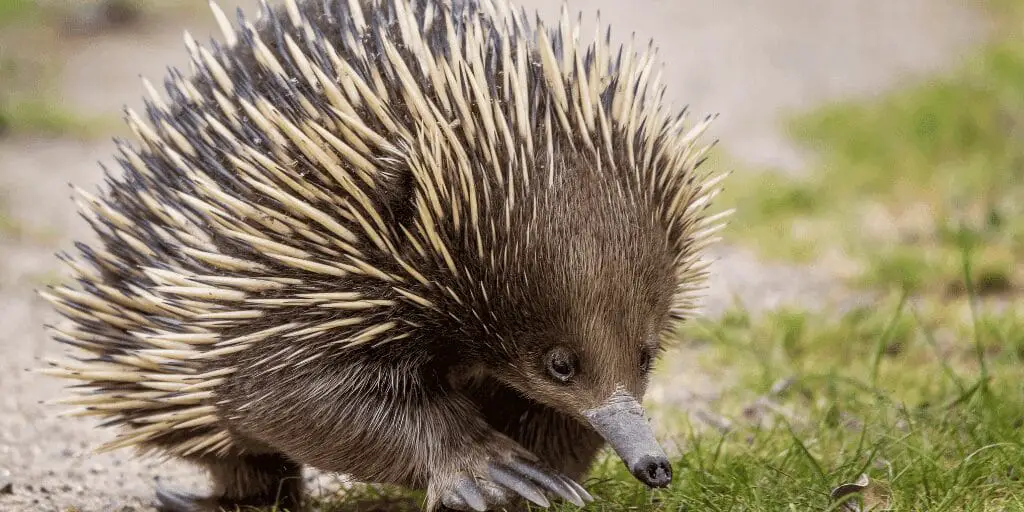
Echidna’s Spiny Appearance
The echidna, often mistaken for a quirky cousin of the anteater, boasts a distinctive spiny coat that serves as a formidable shield against predators. These spines, similar to the anteater’s coarse hair, are actually modified hairs and are a remarkable adaptation for protection.
Echidnas are primarily found in Australia and New Guinea, where they roam through a variety of habitats, from forests to arid deserts. As one of the few egg-laying mammals known as monotremes, the echidna shares this rare reproductive trait with the platypus, another inhabitant of the Australian wilderness.
Their status as monotremes places them in a unique position within the animal kingdom, highlighting their ancient lineage and evolutionary distinctiveness.
Diet and Predatory Behavior
When it comes to dining preferences, the echidna’s menu is quite similar to that of the anteater, with ants and termites featuring prominently. However, the echidna’s approach to foraging is what sets it apart. Equipped with a long, sticky tongue and robust claws, the echidna is an adept hunter, capable of breaking into termite mounds and anthills with ease.
Unlike some other anteater-like animals, echidnas do not have teeth. Instead, they rely on the grinding action of their spines and the sticky surface of their tongue to capture and consume their prey. This unique combination of tools allows the echidna to thrive in its environment, making the most of the food sources available.
Reproductive Cycle and Maternal Care
The reproductive cycle of the echidna is as fascinating as its appearance. As egg-layers, female echidnas deposit a single, leathery egg into their pouch, where it incubates for about ten days before hatching.
The emerging puggle, as the baby echidna is endearingly called, is tiny and vulnerable, much like the offspring of an anteater. The mother provides warmth and protection, carrying the puggle in her pouch until it begins to develop spines.
Maternal care continues even after the puggle leaves the pouch, with the mother returning to her burrow to nurse it until it is ready to fend for itself. This level of maternal investment is crucial for the survival of the species and is a touching parallel to the nurturing behavior exhibited by mother anteaters with their young.
5. Tamandua
Tamandua’s Arboreal Lifestyle
The tamandua, a lesser-known cousin of the giant anteater, is quite the acrobat of the treetops. These creatures are specially adapted to life above ground, with strong, curved claws that allow them to cling to branches and navigate the forest canopy with ease.
Unlike their ground-dwelling relatives, tamanduas spend much of their time in the trees of South and Central America, from the tropical rainforests to the savannas. Their prehensile tails act as a fifth limb, providing balance and support as they reach for distant branches.
This arboreal lifestyle is a stark contrast to the primarily terrestrial existence of other anteater species, which roam the earth in search of food.
Feeding Habits and Diet
Tamanduas have a specialized diet that primarily consists of ants and termites. With their long, sticky tongues, they can probe into nests and extract their prey with precision. This diet is similar to that of their anteater kin, but tamanduas are more selective in their foraging. They tend to avoid larger, more aggressive ant species, preferring the less defended nests.
Their foraging behavior is a delicate balance, as they must consume thousands of insects each day to meet their energy needs. While both tamanduas and anteaters share this insectivorous trait, the tamandua’s tree-based hunting grounds offer a different array of insect nests than those found on the forest floor.
Social Interaction and Breeding
Tamanduas are solitary creatures, roaming the forest alone except when it’s time to find a mate. Their social interactions are limited, with the primary focus being on reproduction. During the mating season, tamanduas will seek out partners, and after a successful courtship, the female will carry her offspring for a gestation period of around 130 to 150 days.
Once born, the young tamandua rides on its mother’s back, learning the ropes of tree-climbing and foraging. This nurturing behavior mirrors that of other anteater species, where the offspring depend on their mothers for food and protection until they are ready to venture out on their own. Despite their solitary nature, the care tamanduas provide to their young ensures the survival and continuation of their species in the treetops of their habitat.
6. Numbat
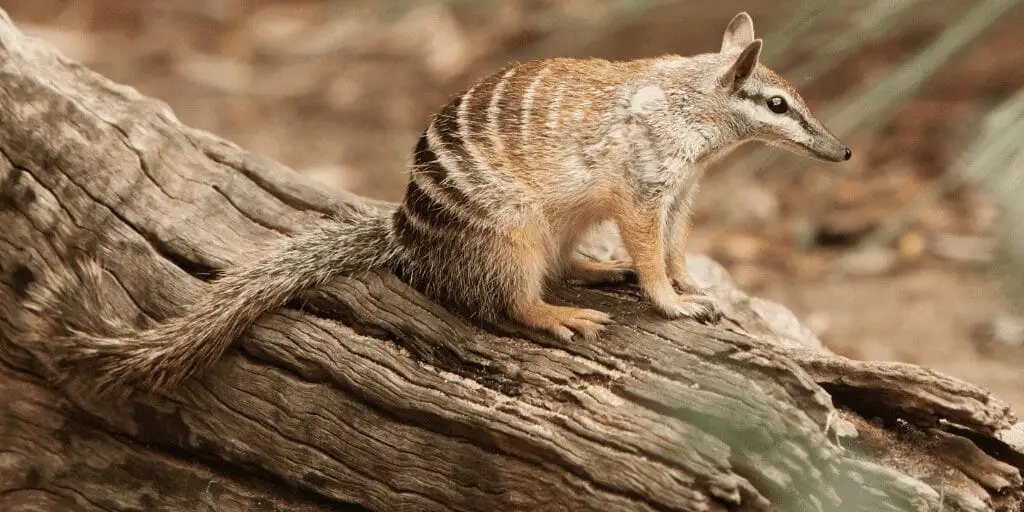
Numbat’s Distinctive Appearance and Habitat
The Numbat, with its reddish-brown coat adorned with striking white stripes, is a small yet captivating creature that calls the woodlands of Australia home. This marsupial stands out not just for its vivid coloring but also for its bushy tail that adds to its unique silhouette. The Numbat’s pointed head and elongated snout bear a striking resemblance to that of an anteater, a feature that is particularly adapted for its feeding habits.
Unlike many of its nocturnal counterparts, the Numbat is diurnal, meaning it’s active during the day, which is quite rare among Australian marsupials. Its preference for the eucalypt woodlands and sandplain heaths of southwestern Australia has become a defining aspect of its existence.
However, the Numbat’s beauty and uniqueness come with a shadow of concern, as it is currently listed as an endangered species. Conservation efforts are in full swing to protect this distinctive animal, with initiatives focusing on habitat preservation and increasing public awareness of its plight.
Diet and Foraging Behavior
The Numbat’s diet is specialized and intriguing, as it primarily feasts on termites. Unlike other mammals that may hunt or graze, the Numbat spends its daylight hours foraging for these insects, using its long, sticky tongue to extract termites from their nests – a method reminiscent of the anteater’s feeding technique.
This specialized diet means that the Numbat plays a crucial ecological role in controlling termite populations within its habitat. The Numbat’s foraging behavior is a delicate dance with nature, as it must consume thousands of termites each day to sustain itself. This singular focus on termites dictates much of the Numbat’s daily life and has shaped its physical adaptations, including its impressive tongue and sensitive snout.
Reproduction and Social Structure
The Numbat’s approach to reproduction and social interaction is as unique as its appearance. Unlike many marsupials, the Numbat does not have a pouch. Instead, the young cling to the teats on their mother’s belly for nourishment and safety. Typically, a Numbat mother will give birth to four offspring per year.
These creatures are mostly solitary, rarely interacting with one another outside of the breeding season, which is a trait they share with the more solitary anteaters. The Numbat’s preference for solitude extends to its territorial nature, with individuals maintaining and defending their own areas.
The challenges that Numbats face are not insignificant; habitat loss due to land clearing and predation by introduced species like foxes and feral cats have greatly impacted their numbers. Conservationists are working tirelessly to mitigate these threats and ensure that future generations can continue to marvel at the Numbat’s unique way of life.
7. Giant Anteater
Physical Traits and Natural Habitat
The Giant Anteater is a creature of grandeur and mystery, boasting an impressive size that can reach up to 7 feet from the tip of its snout to the end of its tail. Its fur is a tapestry of earthy tones, with a distinctive pattern featuring a black and white shoulder stripe that makes it stand out in the wild. This stripe, along with its elongated snout and voluminous, bushy tail, gives the Giant Anteater an unmistakable silhouette.
Roaming across the diverse landscapes of South and Central America, the Giant Anteater has a penchant for a variety of environments. It thrives in tropical and dry forests, savannas, and open grasslands, where it can forage for its food. As the largest of the four anteater species, it commands a presence in its natural habitat, yet it remains vulnerable to the ever-encroaching threats of human activity.
Feeding Habits and Ant Diet
When it comes to dining, the Giant Anteater has a palate fixated on ants and termites. This insectivorous mammal has evolved a specialized feeding technique that is as efficient as it is fascinating. With powerful forelimbs equipped with sharp claws, it tears open anthills and termite mounds with ease. Then, extending its two-foot-long, sticky tongue, it laps up its prey at a rapid pace—up to 150 ants or termites per minute.
But the Giant Anteater is no brute; it’s a considerate feeder. It never completely destroys a nest, ensuring that the insect colony can recover, which in turn allows the anteater to return for future meals. This sustainable feeding strategy showcases the Giant Anteater’s intricate connection to its ecosystem.
Solitary Behavior and Reproduction
The Giant Anteater is a solitary wanderer, preferring to live a life of quiet independence. It only seeks out company during the mating season. After a gestation period of about 190 days, a female Giant Anteater gives birth to a single offspring. In a tender display of maternal care, the mother will carry her pup on her back for up to a year, protecting it from predators and teaching it the ways of their world.
Despite their resilience and adaptability, Giant Anteaters face significant threats from habitat loss due to agriculture and urban development, as well as from hunting. These pressures have led to a decline in their population, making conservation efforts crucial for the survival of this majestic species.
8. Silky Anteater
Unique Features and Arboreal Lifestyle
The Silky Anteater, a pint-sized marvel, is the epitome of cuddly appearance with its dense, soft fur that can range from a subtle grey to a warm yellowish hue, topped with a silvery sheen that gives it a mystical glow in the forest canopy.
This creature is a master of the treetops, leading a nocturnal lifestyle that is entirely arboreal. Its size is diminutive, often no larger than a squirrel, but don’t let its small stature fool you; it’s perfectly adapted for life above ground.
The Silky Anteater’s sharp claws are its secret to an adept tree-climbing life, allowing it to navigate the vertical world of southern Mexico, Central America, and South America with ease. The forests of these regions are its playground and home, where it spends most of its time curled up in the crook of a tree during the day, camouflaged and out of sight from potential predators.
Diet and Predatory Behavior
Despite its gentle appearance, the Silky Anteater is a specialized predator with a diet that is almost exclusively ants. It forages through the treetops at night, using its keen sense of smell to locate its prey. Once a promising ant colony is found, it employs its long, sticky tongue, which can extend up to a remarkable length, to lap up the ants efficiently.
This tongue, a common feature among anteaters, is a perfect tool for reaching into narrow crevices and quickly withdrawing with a meal.
By consuming large quantities of ants, the Silky Anteater plays a crucial role in controlling ant populations and maintaining a delicate balance within its forest habitat. This dietary specialization has allowed the Silky Anteater to carve out a niche where it thrives, away from the forest floor and the competition found there.
Reproductive Habits and Conservation Status
When it comes to continuing its lineage, the Silky Anteater follows a simple reproductive strategy. After a gestation period, a female typically gives birth to a single pup, which she raises with care. The young cling to their mother’s back, learning the ropes of an arboreal lifestyle from an early age.
Despite facing threats such as habitat destruction and the illegal pet trade, the Silky Anteater is currently listed as Least Concern on the IUCN Red List. However, this status should not lead to complacency, as ongoing deforestation and human encroachment continue to shrink its natural habitat.
Conservation efforts are essential to ensure that this unique species continues to grace the treetops of its native regions for generations to come.
9. Pangolin
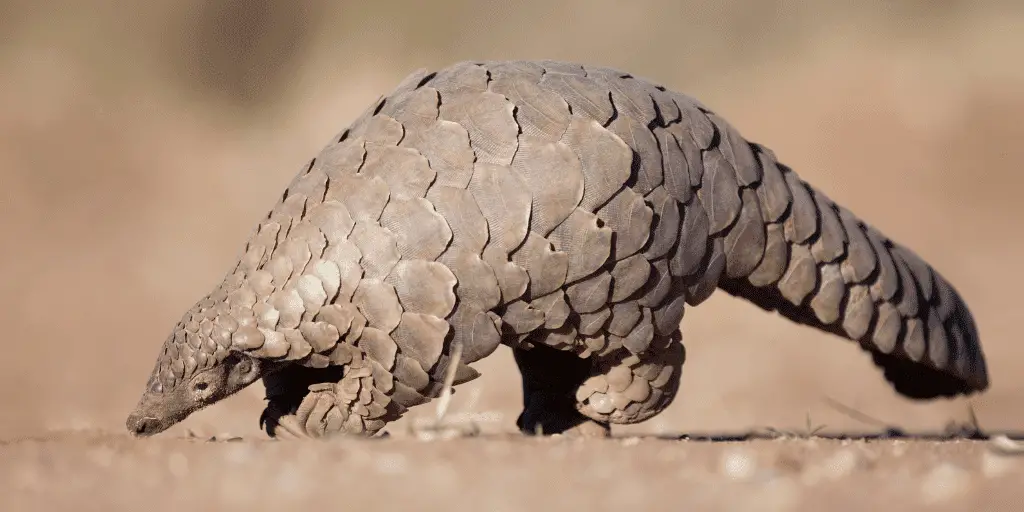
Pangolin’s Unique Scales and Physical Characteristics
The pangolin, often mistaken for an anteater due to its elongated snout and similar body shape, is a truly unique creature that stands out in the animal kingdom.
Its most striking feature is the armor-like scales that cover its body, which are made of keratin—the same material that human nails and hair are composed of. These scales provide a formidable defense against predators, shimmering with an artichoke-like pattern that has earned the pangolin nicknames such as “walking pine cone” or “artichoke with legs.”
When danger looms, the pangolin employs a defense mechanism akin to that of an anteater, curling up into a tight ball. This posture shields its vulnerable underbelly and presents a nearly impenetrable barrier of scales to any would-be attacker. The pangolin’s small, conical head and sturdy limbs, equipped with sharp claws, further enhance its resemblance to the anteater, although it is not closely related.
Insectivorous Diet and Foraging
Pangolins are specialized feeders with a diet that primarily consists of ants and termites. Their foraging behavior is a fascinating display of adaptation and efficiency.
Equipped with a long, sticky tongue that can extend to a length matching their own body, pangolins skillfully extract insects from deep within anthills and termite mounds. This remarkable tongue is rooted deep in their chest cavity and retracts into a sheath when not in use.
To access their prey, pangolins use their strong, curved claws to tear open the hard exteriors of insect colonies. Once breached, the pangolin’s tongue darts in and out with rapid, precise movements, collecting insects en masse. This method of feeding is highly effective and allows them to consume thousands of ants and termites in a single meal.
Reproductive Behavior and Conservation Challenges
The intimate details of pangolin reproductive behavior remain somewhat enigmatic. What is known is that pangolins typically give birth to a single offspring after a gestation period that can vary from 70 to 140 days, depending on the species.
The young pangolin, called a pangopup, is born with soft scales that harden after a few days. Mothers are nurturing, carrying their young on their backs, and providing them with milk and protection until they can fend for themselves.
Pangolins face significant threats from illegal wildlife trade, which is driven by demand for their scales and meat, particularly in Asia and Africa. Their scales are erroneously believed to have medicinal properties, while their meat is considered a delicacy. This has led to pangolins being labeled as the most trafficked mammals in the world.
Conservation efforts are underway to protect these unique animals, including international trade bans, habitat protection, and raising public awareness to reduce demand. The survival of pangolins depends on the effectiveness of these measures and the willingness of the global community to enforce them.
Conclusion
In conclusion, several animals share a resemblance to the anteater due to their elongated snouts, specialized diet of ants and termites, and unique defense mechanisms.
The Chinese Pangolin, armadillo, aardvark, echidna, tamandua, numbat, giant anteater, silky anteater, and pangolin all have distinct features that make them look like anteaters, but they are not closely related. These animals inhabit various regions around the world, from Africa to Australia and the Americas, and play essential roles in their respective ecosystems through their foraging habits and burrowing behaviors.
The Chinese Pangolin, armadillo, and pangolin share similar protective scales made of keratin, while the aardvark, echidna, tamandua, numbat, and anteaters have specialized bodies and adaptations for feeding on ants and termites. The silky anteater, tamandua, and numbat are more arboreal in nature, while the others are terrestrial.
Despite their unique characteristics, many of these anteater-like animals face significant threats from habitat loss, human activities, and illegal wildlife trade. Conservation efforts, including habitat preservation, public awareness campaigns, and stricter regulations on wildlife trade, are crucial for ensuring the survival of these fascinating creatures that look like anteaters.
This article has provided a comprehensive overview of the various animals that share similarities with anteaters, offering readers a satisfying and informative exploration of these intriguing species.


